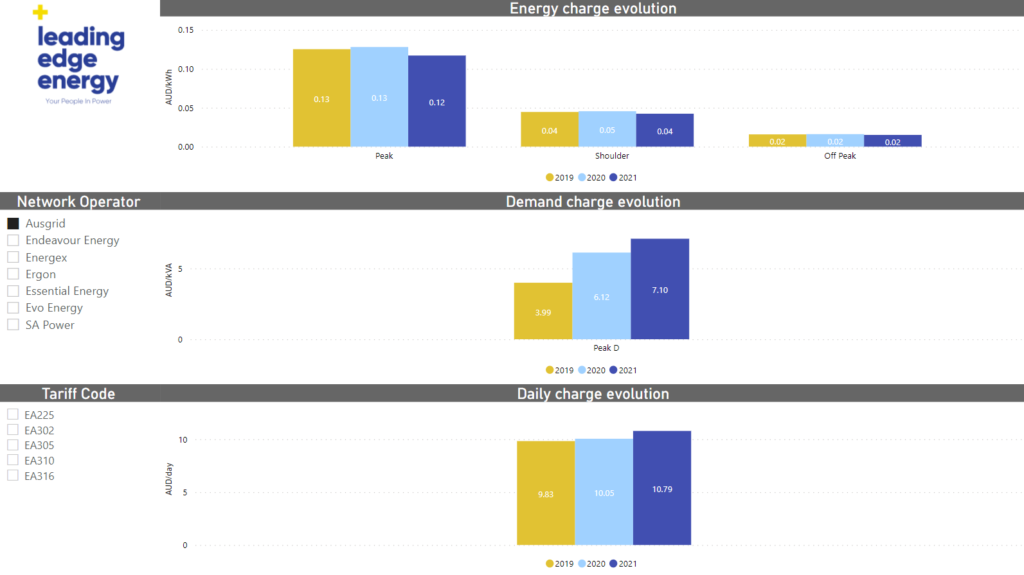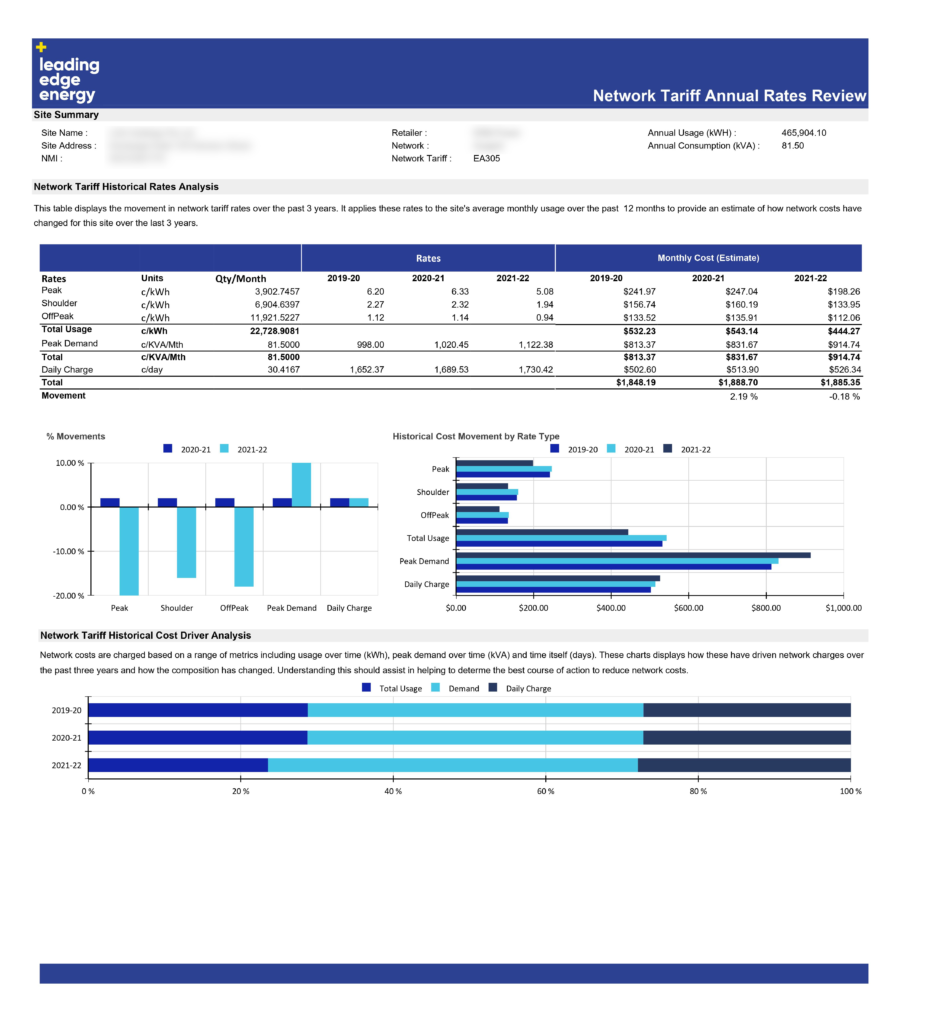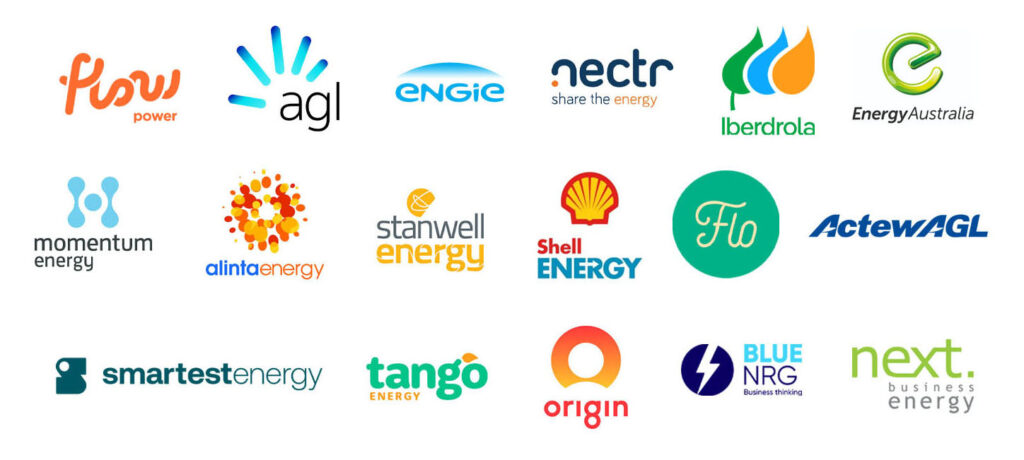Network charges account for between 30 and 60 per cent of an average Australian energy bill and a shift towards a cost-reflective pricing model for network tariffs could result in your business paying more for use of the transmission and distribution network.
The Australian Energy Regulator (AER) keeps network tariffs in check with an annual review process, but a rapidly changing energy generation mix, rooftop solar, battery storage and distributed energy resources are all driving a need for networks to adjust their pricing models to better reflect the changing cost of providing services to energy users.
So how does that affect you? Understanding how these tariffs are calculated is not easy, which is why we are breaking it down for you.
What are network charges?
Australia is a huge country with one of the longest electricity distribution networks in the world.
Transporting electricity around such a huge grid costs a lot of money and you as a client pay towards operating, maintaining and upgrading the grid.
Network charges comprise the costs of transporting electricity from generation to point of consumption, using the transmission and distribution infrastructure (also known as poles and wires).
It must also be understood that network operators are monopolies, which is why the AER regulates what they can charge.
Because network charges make up a hefty chunk of electricity bills, any changes to them can have a material impact on your home or business budget if they are not planned for. To help avoid network tariff-driven bill shock, regulated electricity network businesses are required by the AER to periodically (generally every five years) apply for revenue allowances for the next five years. This revenue allowance will generally equal the network businesses’ forecast costs plus their operating margin. Annual network tariff changes are then expected by the AER to be in line with the five-year forecasts.
The energy transition is impacting network providers’ business models
There is no doubt that Australia’s transition to renewable energy, battery storage, demand response and distributed energy resources has taken on a life of its own.
Because the system has changed so much in such a short period of time, old pricing conventions are being phased out.
The change was first proposed in 2014 by the Australian Energy Market Commission, introducing a rule that pushed for a transition to reflective pricing.
Reflective pricing is the concept of reflecting individual consumer choices in what they end up paying. This is also known as the cause-and-effect principle, and put simply – those users who are creating costs in the system means that they should pay for those costs.
The tangible effect is that network operators are generally moving away from usage (kilowatts per hour) based charges to peak demand, capacity tariffs and fixed daily charges.
The new pricing models favour those energy customers that reduce their grid energy use, those that have rooftop solar, and those that participate in behind-the-meter distributed energy resources schemes and demand response.
How are electricity customers charged for the use of the network?
Network businesses charge for the use of their network in several standard ways. Various network charges can be applied to electricity customer accounts – the question is, are you on a tariff structure that gives your business the best value?
| Charge | Description |
|---|---|
| Daily charge | This tariff structure is the most simple one and involves a fixed charge per day to each electricity connection point where demand is recorded. |
| Usage charge | A usage charge can be calculated on a flat or variable charge. It is calculated on a cent per kilowatt-hour basis for energy consumed at a connection point. This can either be:
|
| Demand charge | Demand charges are calculated over a one-month period. They are applied for demand recorded at a connection point in $/kVA/month or $/kW/month.
These charges are applied to the maximum half-hourly kW (or kVA for large customers) power reading registered at a connection point. |
How are electricity customers assigned a network tariff?
Household and Small to Medium Enterprise (SME) bills normally have network charges bundled into generalised charges on bills such as the Peak, Shoulder and Off-Peak rates. Larger Commercial and Industrial (C&I) customers’ bills are normally unbundled and display the network charges in detail on the final invoice.
Each customer is assigned a network tariff based on a number of variables which include:
| Location: | This determines which network a customer is on. |
| Customer/User type: | Residential, Small business (SME), Large business (C&I). |
| Voltage: | High (HV) or Low (LV) |
| Annual usage: | Volume of electricity (kWh) that needs to be transported. |
| Peak demand: | The maximum capacity that the network will need to provide during a time period. |
Due to the different variables, each network has up to 160 different network tariffs (at the extreme end), which is why the process of understanding what network tariff a particular site should be on can be complicated. And because of the complexity, we observe that many electricity customers are in fact on a more costly network tariff than they should be.
Our blog section covers network tariffs in detail and includes a case study on how we adjusted the charges for one business, resulting in savings of $15,000 per year.
Changes to network charges starting 1st July 2023
Network charges are reviewed on July 1st each year for all networks in all states in the National Electricity Market (NEM). Changes in network rates and charges can have a material impact on electricity bills so it’s important to have experts at hand who can assist you and your business plan for and manage the network costs.
Network Tariff Change Visualisation Tool
To give you an idea of recent changes to the most popular low-voltage business network tariffs, we have created a dynamic tool that shows the different rates for each Tariff Code within each Network Operator, and their evolution from 2019 to 2024. You can select your Network Operator and Tariff Code on the tool to see how your charges will be affected. Click on the image below to try our tool.

Leading Edge Energy customer benefits
As a Leading Edge Energy client, you will receive a Network Tariff Annual Rates Review report for each of your commercial and industrial (C&I) sites in the coming weeks. Below is a sample of the report you can expect.

Whether you’re a current or future Leading Edge Energy customer, we’re here to help.
Our experts can help you actively manage your costs
You may be paying more than you should be for network charges and other related fees.
If you are still unsure, our experts will analyse your electricity bills and recommend ways to maximise savings by picking the right network tariff and adjusting your energy use to match it.
Take advantage of our expert knowledge and stop paying more than you should be. Call us at 1300-852-770 or email us at admin@leadingedgeenergy.com.au to book an obligation-free consultation and let’s talk about how you can save on your network tariffs.
We source, analyse, compare and rank commercial, industrial and multisite energy quotes. Obligation Free.
Chat with one of our experienced consultants today and get the insights your business needs to help manage the risks associated with volatile electricity and natural gas markets. Our energy procurement service is obligation-free and provides a time-saving way of securing lower energy rates from our panel of energy retailers.







